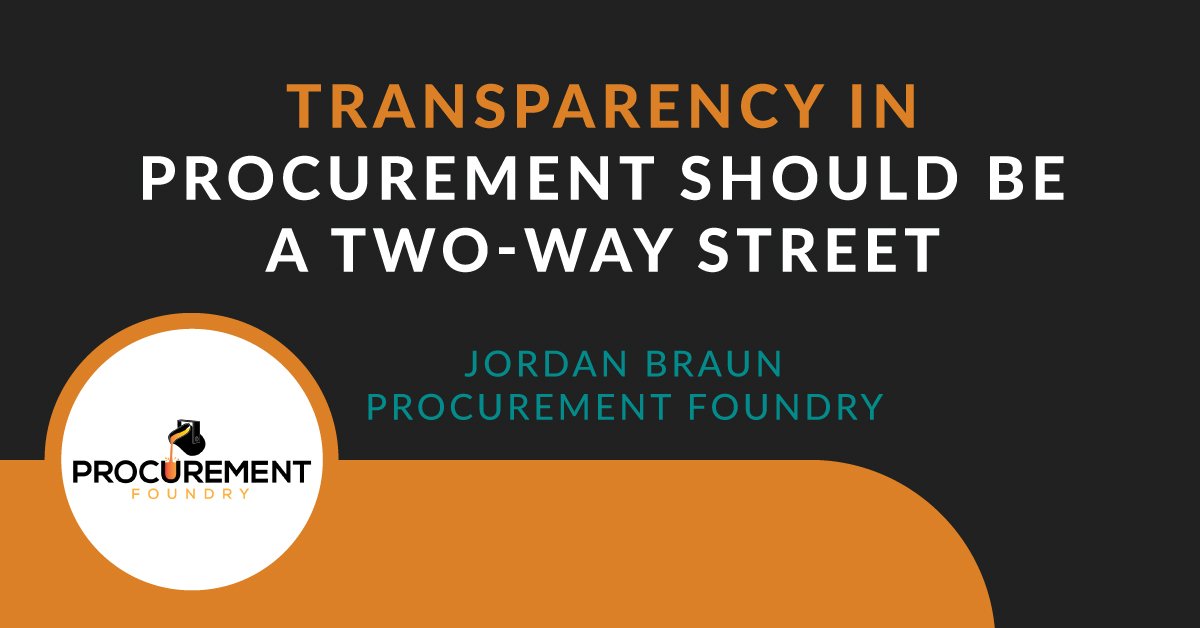Maximizing Savings Opportunities and Procurement's Strategic Value for CPOs
Saving money is not always about pinching pennies: advanced and data-driven insights enable you to identify real cost-saving opportunities, negotiate...

We go to great lengths to uncover every possible risk and advantage that could impact the final decision of a sourcing event, expecting full transparency from suppliers in the process. From initial fact-finding through RFIs, deeper discovery during the RFP, and even additional follow-up with suppliers, the weight of transparency in procurement lies heavily on bidders.
Unfortunately, this creates an imbalance that negatively affects both buyers and sellers. A common complaint from procurement is incomplete or insufficient responses. However, feedback from suppliers often cites concerns about an absence of background information, a lack of clarity in the project scope, and unnecessary, stringent requirements.
Like with many other challenges in life and relationships, communication is key for a mutually beneficial outcome. Increased transparency about your own RFx processes, including vendor expectations and evaluations, can not only improve the quality of responses but, most importantly, save you time and possibly money.
Here are five easy ways to improve transparency in your sourcing process.
Be as detailed as possible in your problem statement. The more time spent explaining the complexity of the problem, the better your proposed solutions will be.
Then, take it one step further and explain to the organization why it’s important to solve the problem. Map the people, processes, and data that the problem/solution impacts.
Admittedly, this is sensitive. But, whenever possible, include information about why you’re issuing the RFP now. Particularly when you’re replacing a current provider or going to RFP when you have a preferred solution already.
One of the most common frustrations from vendors is feeling like they wasted their time when a preferred vendor had already been selected. According to Art of Procurement’s recent request management survey, new vendors only have a one in five chance of unseating the incumbent when this happens. So, provide background on your current solution and give more weight to the criteria that would make you consider a new vendor.
Your vendors are experts in their field. However, all too often, the RFP boxes them in and doesn’t allow leeway for them to provide what they believe could be your best solution. Allow for creative, innovative solutions outside of a predetermined SOW. You’ll get more creative, more tailored solutions.
We all know that not all RFP questions are created equal. Some are straightforward and standard while others are designed to provoke thoughtful, important answers. Provide insight on the weight of each section’s scoring so that respondents know exactly where your priorities lie. That way, they’ll spend time on what matters most.
Sometimes, a vendor’s desire for clarity can be satisfied by making it easy for them to find information. So, rather than digging through email, simplify the process using a digital platform. RFP management software facilitates transparency from beginning to end — during the sourcing event, as well as after, to provide feedback to participants who did not win the bid.
Transparency in procurement is becoming more and more important as vendors and suppliers become more selective about the businesses they choose to engage with. Being open with your vendors will go a long way when it comes to becoming a vendor of choice.
Reach out to RFP360 for a demo to learn how we can help your RFP process become easier and more efficient.

Saving money is not always about pinching pennies: advanced and data-driven insights enable you to identify real cost-saving opportunities, negotiate...

The topic of our recent roundtable discussion with a dozen Procurement Foundry community members—exploring potential flaws in procurement incentive...

Every 30 days or so, I get the same alert on my phone—“Your electricity bill is available for viewing.” I take a quick look, make sure nothing seems...